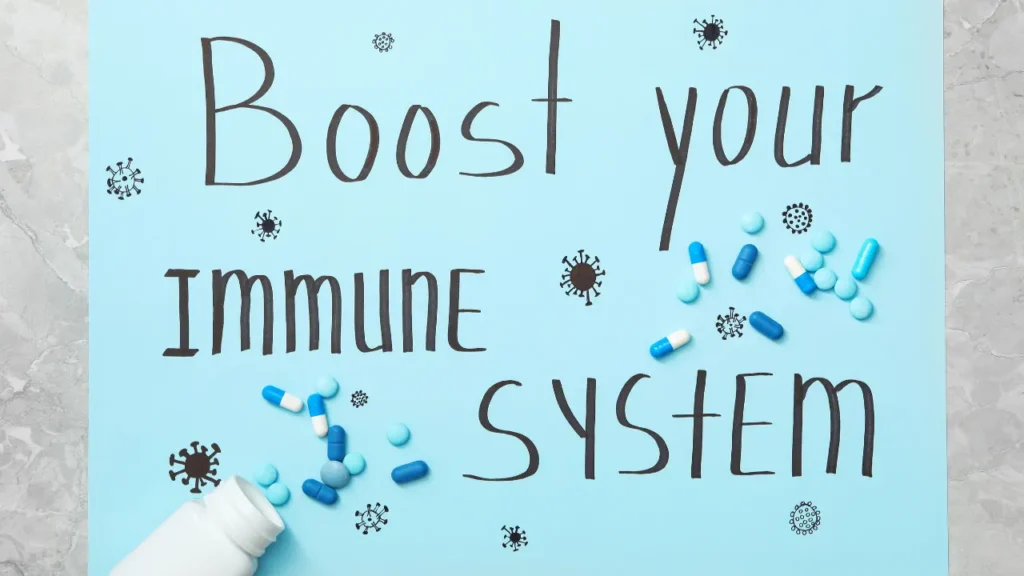The nootropic substance known as transfer factor has attracted considerable interest in the search for cognitive enhancement. This page includes an in-depth discussion of transfer factor’s nature, health advantages, recommended dosages, adverse effects, possible drug interactions, and recommendations for responsible usage. Anyone looking to take advantage of transfer factor’s advantages for alertness, focus, and cognition must comprehend the physiological and chemical processes that underlie its impacts on the body and brain.
You May Also Like:
What Are the Best Mushrooms for Brain Health? Here Are the Facts.
5 Things to Consider When Choosing the Best Mushrooms for Mental Health
Transfer Factor: Benefits, Dosage, Side Effects, Drug Interactions, and Other Important Information is an original (NootropicsPlanet) article.
Nature of Transfer Factor
A substance called a transfer factor is obtained from either the animal or human immune systems. It is a mixture of tiny proteins called peptides essential to immunological communication rather than a single molecule. These peptides are called “transfer factors” because they are believed to spread immunity-related information from one person to another. Transfer factor differs from other nootropic supplements because of its complicated character, which stems from its roots in the immune system.
Health Benefits of Transfer Factor
Cognitive Enhancement: Further research is necessary to determine the direct effects of transfer factors on cognitive processes. However, cognitive performance may benefit indirectly from the supplement’s ability to lower inflammation and boost immune system function. In addition to supporting brain function and safeguarding neuronal networks, reducing systemic inflammation may improve alertness, focus, and general cognitive ability.
Immune System Support: The main advantage of transfer factor is its capacity to fortify the immune system, which can help those with compromised immune systems, lessen the frequency and intensity of infections, and strengthen the body’s defense mechanisms, which may protect against a range of pathogens.
Potential Anticancer Properties: The activation and modification of T and NK cells can greatly aid in monitoring and getting rid of malignant cells. Transfer factor may offer supportive care in oncology, strengthening the body’s defenses against cancer, even if it is not a stand-alone treatment.
Management of Autoimmune Diseases: Transfer factor has the potential to aid in the treatment of autoimmune diseases by regulating the immune system’s reaction. Balancing immune cell activity and cytokine production may reduce the intensity of autoimmune reactions, relieving individuals impacted.
Allergy and Asthma Relief: Transfer factors’ capacity to alter immunological responses can control asthma and allergy reactions. Transfer factor has the ability to modulate the immune system’s reaction to allergens, which may lessen the intensity and frequency of allergic and asthmatic reactions.

Chemistry of Transfer Factor
Transfer factor is a distinct collection of bioactive peptides and protein fractions extracted from mammalian leukocytes and colostrum. The main constituents are tiny, information-carrying molecules with an amazing capacity to alter the immune system. These peptides facilitate the transfer of immunological information from one organism to another because they contain sequences unique to the immune memory of prior antigenic exposures.
Chemically speaking, transfer factors are distinguished by their low molecular weight—typically between 3,500 and 5,000 daltons. Their small size makes it easier for the recipient’s body to absorb and distribute them. Depending on where they come from, transfer factors can have different specific chemical compositions, but generally speaking, they contain a combination of nucleosides, polypeptides, and oligopeptides.
These molecules act as immune messengers, carrying specific antigen patterns that can prime the recipient’s immune system to recognize and react more swiftly to pathogens encountered by the donor.
Physiological Mechanism of Action
The physiological impact of transfer factor is predominantly seen in its ability to enhance the immune response. This action is mediated through several mechanisms:
- Enhancement of Cell-mediated Immunity: Transfer factors can increase the activity and efficacy of T lymphocytes, which are crucial for cell-mediated immunity. They enhance the proliferation of these cells and their ability to recognize and respond to specific antigens, which is particularly beneficial for fighting viral infections and other pathogens that require a targeted immune response.
- Modulation of Cytokine Production: Cytokines are signaling molecules that mediate and regulate immunity, inflammation, and hematopoiesis. Transfer factors can modulate the production of cytokines, balancing the immune response. This modulation can help reduce excessive inflammatory reactions that might harm the body while ensuring a robust defense against infections.
- Stimulation of Natural Killer (NK) Cells: NK cells play a vital role in the early defense against infected or malignant cells. Transfer factor enhances the activity of NK cells, improving the body’s ability to combat cancerous cells and viral infections.
- Immune Memory Transfer: By transferring the immunological memory of specific antigens, transfer factors prepare the immune system to recognize and react more efficiently to pathogens it has not previously encountered. This aspect of transfer factor is particularly significant, as it can potentially provide immunity or a more robust immune response to diseases without direct exposure.


Optimal Dosage of Transfer Factor
The diversity of individual reactions and the dearth of large-scale clinical trials explicitly focusing on cognitive results make it difficult to determine the ideal dosage of transfer factor for cognitive enhancement. Dosages can differ dramatically depending on the supplier and method used to prepare the transfer factor supplement. As indicated by healthcare professionals, users are advised to begin with smaller doses and gradually increase based on response and personal tolerance.
Side Effects of Transfer Factor
Transfer factor is generally considered safe when used as directed. However, as with any supplement, there can be side effects, particularly at high doses or in individuals with specific health conditions. Common side effects may include mild gastrointestinal discomfort, fatigue, and skin reactions. Users must monitor their reactions and consult healthcare professionals if adverse effects occur.


Potential Substance Interactions with Transfer Factor
Because transfer factor modulates immune function, it may interact with drugs and supplements that also impact immune function. These include corticosteroids, immune-modulating medications, and immunosuppressants. Before beginning transfer factor, people using such medications should speak with a healthcare provider to prevent any unexpected reactions.
Best Responsible Uses of Transfer Factor
Responsible use is essential for anyone interested in harnessing transfer factors to improve cognitive performance, which includes speaking with healthcare providers, beginning with lower doses, monitoring for adverse effects, and being wary of potential combinations with other substances. Furthermore, it is critical to have reasonable expectations about the benefits and to incorporate transfer factors into a complete approach to cognitive health that includes a balanced diet, frequent exercise, and appropriate sleep.
Transfer Factor:
Conclusion
While transfer factor promises to improve immune function and support health, further research is needed to fully elucidate their mechanisms of action, optimal dosages, and potential side effects. Additionally, the quality and source of transfer factor supplements vary, necessitating caution and ensuring products come from reputable sources. Overall, transfer factors represent a fascinating area of study in immunology and offer potential therapeutic applications in enhancing immune function and combating infectious diseases, autoimmune disorders, and cancer. As research advances, transfer factors may be increasingly important in promoting human health and well-being.


References:
- Transfer Factor – Uses, Side Effects, and More. Retrieved from:https://www.webmd.com/vitamins/ai/ingredientmono-1011/transfer-factor
- Interstitial transfer factor as adjuvant immunotherapy for experimental glioma. Retrieved from: https://pubmed.ncbi.nlm.nih.gov/16471320/
- Transfer factor: an overlooked potential for the prevention and treatment of infectious diseases. Retrieved from: https://pubmed.ncbi.nlm.nih.gov/23746171/
Important Note: The information contained in this article is for general informational purposes only, and should not be construed as health or medical advice, nor is it intended to diagnose, prevent, treat, or cure any disease or health condition. Before embarking on any diet, fitness regimen, or program of nutritional supplementation, it is advisable to consult your healthcare professional in order to determine its safety and probable efficacy in terms of your individual state of health.
Regarding Nutritional Supplements Or Other Non-Prescription Health Products: If any nutritional supplements or other non-prescription health products are mentioned in the foregoing article, any claims or statements made about them have not been evaluated by the U.S. Food and Drug Administration, and such nutritional supplements or other health products are not intended to diagnose, treat, cure, or prevent any disease.
